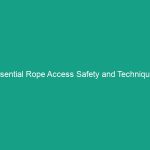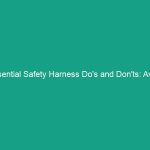Good Morning Team!
Today, we’re going to talk about a critical topic that affects all of us: Essential Hoses Safety Tips: Avoid These Common Risks on the Job. Understanding how to handle hoses safely is crucial for maintaining a safe work Environment. Hoses are vital tools in many jobs, but they can pose significant risks if not managed properly.
Understanding Essential Hoses Safety Tips
When we talk about essential hoses safety tips, we refer to guidelines and practices that help mitigate the risks associated with the use of hoses in various environments, especially in construction, manufacturing, and landscaping. Proper handling and understanding of hoses can reduce accidents and injuries significantly.
Many employees may think that hoses are straightforward tools that don’t require much attention, but this is a misconception. Hoses can become hazardous if not inspected regularly, if they’re improperly stored, or if they’re used inappropriately.
Key Hazards, Risks, and Safety Considerations
Understanding the risks associated with hoses is fundamental to Workplace Safety. Here are some specific Hazards:
- High Pressure: Many hoses are used to transport liquids or gases under high pressure, which can lead to ruptures or leaks, causing injuries or equipment damage.
- Improper Use: Using hoses for unintended purposes can lead to accidents. For instance, using a water hose to transport chemicals may result in contamination.
- Wear and Tear: Over time, hoses can degrade due to exposure to elements, chemicals, or abrasion. Regular inspection is essential to identify wear.
- Tripping Hazards: Hoses that are left on the ground can create trip hazards, leading to falls and injuries.
- Improper Storage: Not storing hoses correctly can lead to kinks, which can weaken the hose and cause malfunctions.
Ignoring these hazards can lead to serious accidents that can affect not only the individual but also the entire team. For instance, a hose rupture can lead to severe injuries and costly downtime.
Best Practices, Procedures, & Actionable Advice
To mitigate risks associated with hose usage, consider the following Best Practices:
1. Regular Inspection
Inspect hoses before each use. Check for:
- Cracks or abrasions
- Signs of leakage
- Proper fittings and connections
2. Proper Use
Always use hoses for their intended purpose. Refer to the manufacturer’s instructions for guidance.
3. Safe Handling
When moving hoses, do so carefully to avoid dragging them across sharp edges or hot surfaces, which can cause damage.
4. Secure Storage
After use, store hoses in a designated area. Coiling them properly will help prevent kinks and damage.
5. Training and Awareness
Ensure everyone who uses hoses is trained on their safe handling and aware of potential risks. This can include hands-on Training and refresher courses.
Real-Life Example
Consider a recent incident where a high-pressure hose ruptured due to lack of inspection. The result was not just a damaged hose but also serious injuries to the operator, leading to a hospital visit. Regular inspections could have prevented this incident.
Regulations, Standards, and Compliance
It’s essential to comply with Regulations set by organizations like OSHA and ISO when working with hoses. These Standards are designed to protect employees and create a safe working environment. Compliance with these regulations not only fosters a culture of safety but also protects the company from potential legal issues.
Familiarize yourself with these regulations and ensure that your work practices align with them. Remember, safety is everyone’s responsibility.
Employee Engagement & Discussion
Now, let’s open the floor for discussion. What safety challenges have you encountered related to hoses? Sharing experiences can help us learn and adapt our safety practices. Additionally, do you have any tips or Best Practices that you find effective? Your insights are valuable!
Conclusion & Key Takeaways
In summary, understanding and applying essential hoses safety tips is vital for ensuring a safe workplace. Regular inspections, proper use, safe handling, secure storage, and compliance with safety standards are key practices we must integrate into our routine.
Let’s commit to prioritizing safety and taking the necessary steps to protect ourselves and our colleagues. Thank you for your attention and dedication to maintaining a safe work environment. Stay safe out there!


